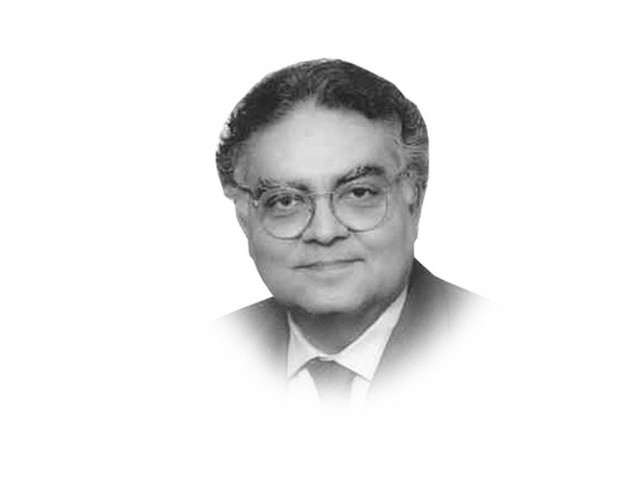Reconstruction for economic democracy — II

The writer is distinguished professor of economics at Beaconhouse National University in Lahore
The institutional structure for economic democracy would provide opportunities to all citizens of Pakistan, rather than a few, to have access to overproductive assets. By bringing the middle class and the poor into the process of investment, there would be a much broader base of investment, competition, efficiency increase and innovation, thereby achieving a sustained and more equitable GDP growth. Three policy initiatives could be considered for initiating a process of sustained economic growth on the basis of economic democracy:
(1) Land for the tiller: a small farmer-based agriculture growth strategy. The government has 2.6 million acres of cultivable state land. It is proposed that this land be distributed amongst current landless tenant farmers, in packages of five acres each. This land for the tiller policy would need to be backed up by establishing what I have called a small farmer development corporation (SFDC) which would provide small farmers with facilities for land development, access over new agriculture technologies (such as tunnel farming, drip irrigation etc.), extension services for developing high value crops, livestock development and production of milk and milk products. The SFDC ought to be owned by small farmers who could buy equity in this corporation through government loans, but would be managed by high quality professionals.
The proposed land for the tiller policy with institutional support of the SFDC would provide small farmers with both the incentive and the ability to increase agriculture productivity. The small farm sector (farms below 25 acres) constitutes a substantial part of the agrarian economy and possesses the greatest potential for productivity increase. Small farms constitute 94 per cent of the total number of farms and 60 per cent of the total farm area. Therefore the proposed land for the tiller policy could enable a shift from the ‘elite farmer strategy’ of the last four decades to a new ‘small farmer strategy’. Small farmers could thus become the subjects of a new trajectory of a faster and more equitable agriculture growth.
(2) For inclusive growth through equity stakes for the poor, the poor can be included in the process of investment and economic growth not merely through micro enterprises, but can be engaged into the mainstream corporate sector as well. The idea here is to establish large corporations, owned by the poor and managed by professionals, in a number of strategic sectors such as milk and milk products, livestock, telecommunications, information technology services, construction and automotive parts production. These corporations could be set up through loans to the poor for purchasing equity stakes in these corporations, and the loans could be returned through dividends earned.
(3) Small scale manufacturing industries require lower capital investment and generate higher employment per unit of output and also have shorter gestation periods compared to the large scale manufacturing sector. Therefore an increased share of investment in this sector could enable a higher GDP growth for given levels of investment as well as higher employment generation for given levels of growth. At the same time if the institutional conditions could be created for enabling small scale industries to move into high value added components for both import substitution in the domestic market and for exports, Pakistan’s balance of payments pressures could be eased. The key strategic issue in accelerating the growth of SSEs is to enable them to shift to the high value added, high growth end of the product market. These SSEs include high value added units in light engineering, automotive parts, moulds, dyes, machine tools and electronics and computer software.
These initiatives for economic democracy constitute a strategy for higher GDP growth through equity. The people would thus become both the subjects as well as the beneficiaries of GDP growth. It would be economic democracy because it would enable growth for the people and by the people. Such an economy could become the basis of sustaining Pakistan’s political democracy for which the people have struggled so long and for which Mohtarama Shaheed Benazir Bhutto gave her life. The best homage to her memory would be to strengthen the foundations of democracy by giving a stake in the country to the poor.
Published in The Express Tribune, October 9th, 2010.
No comments:
Post a Comment